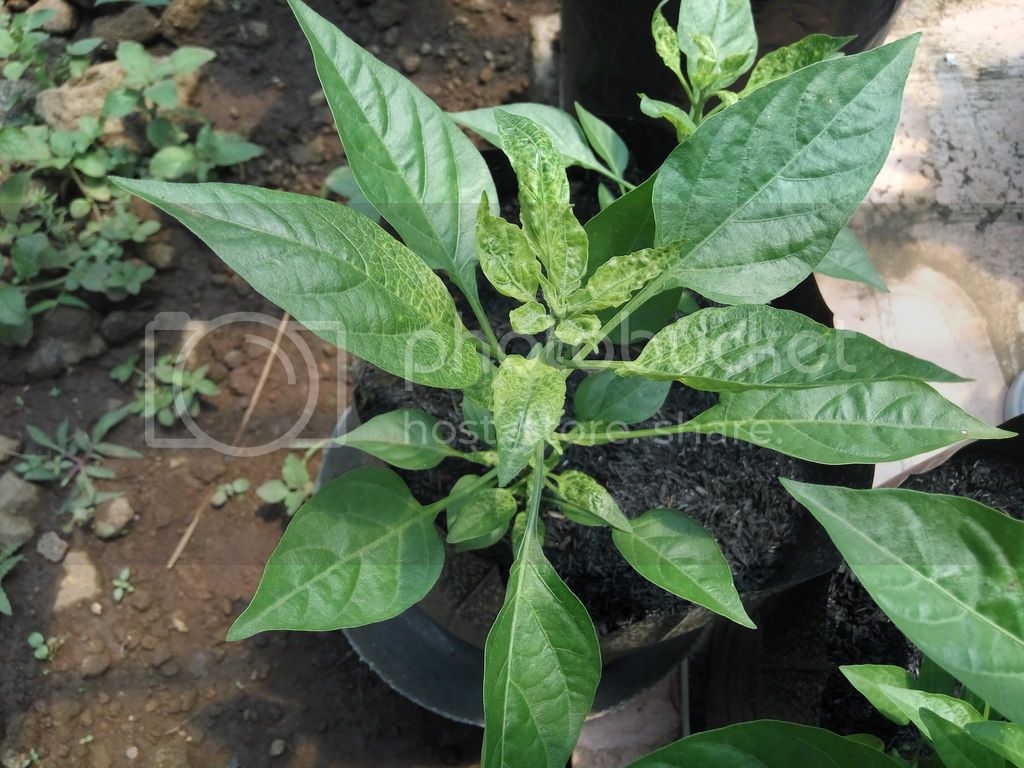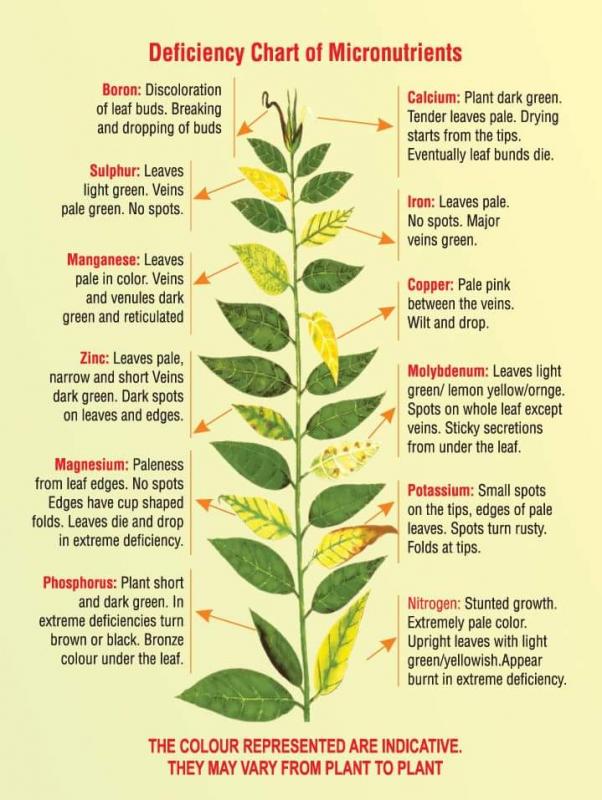-
Do you need help identifying a 🌶?
Is your plant suffering from an unknown issue? 🤧
Then ask in Identification and Diagnosis.
You are using an out of date browser. It may not display this or other websites correctly.
You should upgrade or use an alternative browser.
You should upgrade or use an alternative browser.
Virus?
- Thread starter MrGlen
- Start date
No, nothing done differently. Discoloration actually started a few days ago. I got tied up and forgot about it. I will separate it pending further advice.LocalFart said:Definitely seclude from the rest. Could be a deficiency though?
Is there anything different you do with this plant than the rest?
It is still on the same AB mix as the rest of the plants, but there is a chance I made a bad batch at some point.
There are actually 5 out of 25 plants with the same leaf dis-coloration. They were originally sitting next to one another. It was while spacing them out a bit that I noticed the problem.
If it doesn't look like some type of virus (contagious), I will just wait and see what happens.
There are actually 5 out of 25 plants with the same leaf dis-coloration. They were originally sitting next to one another. It was while spacing them out a bit that I noticed the problem.
If it doesn't look like some type of virus (contagious), I will just wait and see what happens.
They get nutes in their water, watered 1-2 times a day, depending on the weather. Media is charred rice hulls, easy to tell how dry they are. Guess I should overwater a bit and test the ppm of the runoff to see if I have a nutrient "strangeness" of some kind.LocalFart said:There is always the chance of overfeeding or something.
How often are you feeding? do these ones get as much sun? and also being in Indonesia it would be humid AF all the time so could even be the roots?
Slight difference in sun, the effected plants get a bit less than the others.
If it is a root problem... That would be pretty disappointing. I have been thrilled with the charred rice hulls up to this point.
A friend pointed me to this link. https://www.apsnet.org/publications/imageresources/Pages/Iw000117.aspx

That looks like a closer match than anything else I can come up with. With regards to nutrient deficiencies, the most likely suspect (manganese) results in dark veins and a light leaf tissue. Closer inspection shows I have the opposite, the yellowing is starting at the veins. Bhendi yellow vein mosaic also explains why some of the plants are sick and others not. I have had whiteflies hanging around for a while now, and think they are the vector.
Treatment is by fire.
Additionally, turns out my tomatoes have a virus... yellow leaf curl and a fungus, early blight. I've been a bit of a fool, and let the first two bad tomato plants infect all the others (over the course of months). Kept spraying for pests, waiting for new growth to improve... Looks like I'm going to have a nice little bonfire tomorrow. There is a lot more to growing these plants than I thought. Got to get everything clean as possible and start over. Some of these tomatoes have fruit that is almost ripe, as well.
.

That looks like a closer match than anything else I can come up with. With regards to nutrient deficiencies, the most likely suspect (manganese) results in dark veins and a light leaf tissue. Closer inspection shows I have the opposite, the yellowing is starting at the veins. Bhendi yellow vein mosaic also explains why some of the plants are sick and others not. I have had whiteflies hanging around for a while now, and think they are the vector.
Treatment is by fire.
Additionally, turns out my tomatoes have a virus... yellow leaf curl and a fungus, early blight. I've been a bit of a fool, and let the first two bad tomato plants infect all the others (over the course of months). Kept spraying for pests, waiting for new growth to improve... Looks like I'm going to have a nice little bonfire tomorrow. There is a lot more to growing these plants than I thought. Got to get everything clean as possible and start over. Some of these tomatoes have fruit that is almost ripe, as well.
.
MrGlen said:A friend pointed me to this link. https://www.apsnet.org/publications/imageresources/Pages/Iw000117.aspx
That looks like a closer match than anything else I can come up with. With regards to nutrient deficiencies, the most likely suspect (manganese) results in dark veins and a light leaf tissue. Closer inspection shows I have the opposite, the yellowing is starting at the veins. Bhendi yellow vein mosaic also explains why some of the plants are sick and others not. I have had whiteflies hanging around for a while now, and think they are the vector.
Treatment is by fire.
Additionally, turns out my tomatoes have a virus... yellow leaf curl and a fungus, early blight. I've been a bit of a fool, and let the first two bad tomato plants infect all the others (over the course of months). Kept spraying for pests, waiting for new growth to improve... Looks like I'm going to have a nice little bonfire tomorrow. There is a lot more to growing these plants than I thought. Got to get everything clean as possible and start over. Some of these tomatoes have fruit that is almost ripe, as well.
.
It could be one, or all of the above. Yes, whiteflies are the vector for both mites and disease, or both.
.
This might be a great season for you to expand out your growing to include herbs. Whitefly are my dreaded pest here. (I'll take aphids any day, thank you very much) I've had really great early success this season with basil and spearmint. Although, I've also planted a whole host of other herbs and flowering plants. Nasturtium, marigold, catnip, thyme, and wormwood, to name a few.
.
Even if you don't companion plant with your crops, smaller containers distributed between the rows will still have an effect.
.
Can't tell you enough how incredible the difference has been, already. In your climate, you should be able to grow all of that year round, so it will be doubly effective. Plus the added benefit of attracting pollinators...
Check under those leaves for aphids.
grahamsprodigy said:Check under those leaves for aphids.
No aphids. Thanks for the tip.
solid7 said:
It could be one, or all of the above. Yes, whiteflies are the vector for both mites and disease, or both.
.
This might be a great season for you to expand out your growing to include herbs. Whitefly are my dreaded pest here. (I'll take aphids any day, thank you very much) I've had really great early success this season with basil and spearmint. Although, I've also planted a whole host of other herbs and flowering plants. Nasturtium, marigold, catnip, thyme, and wormwood, to name a few.
.
Even if you don't companion plant with your crops, smaller containers distributed between the rows will still have an effect.
.
Can't tell you enough how incredible the difference has been, already. In your climate, you should be able to grow all of that year round, so it will be doubly effective. Plus the added benefit of attracting pollinators...
I have the basil and thyme seed, just need to plant. I like spearmint, think I saw some living ones for sale at the supermarket the other day. The nasturtium looks particularly interesting as well, being edible and all. Thanks.


